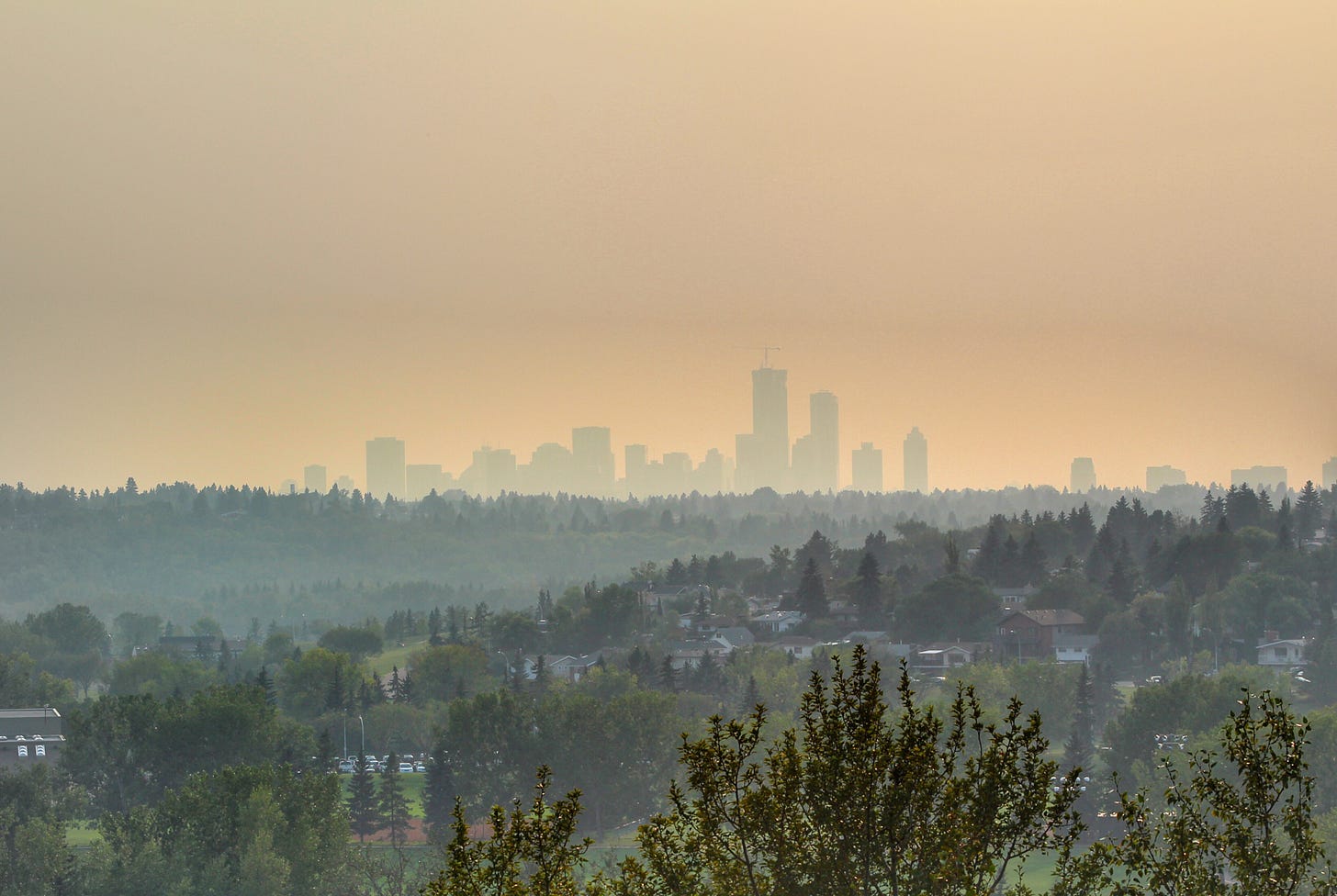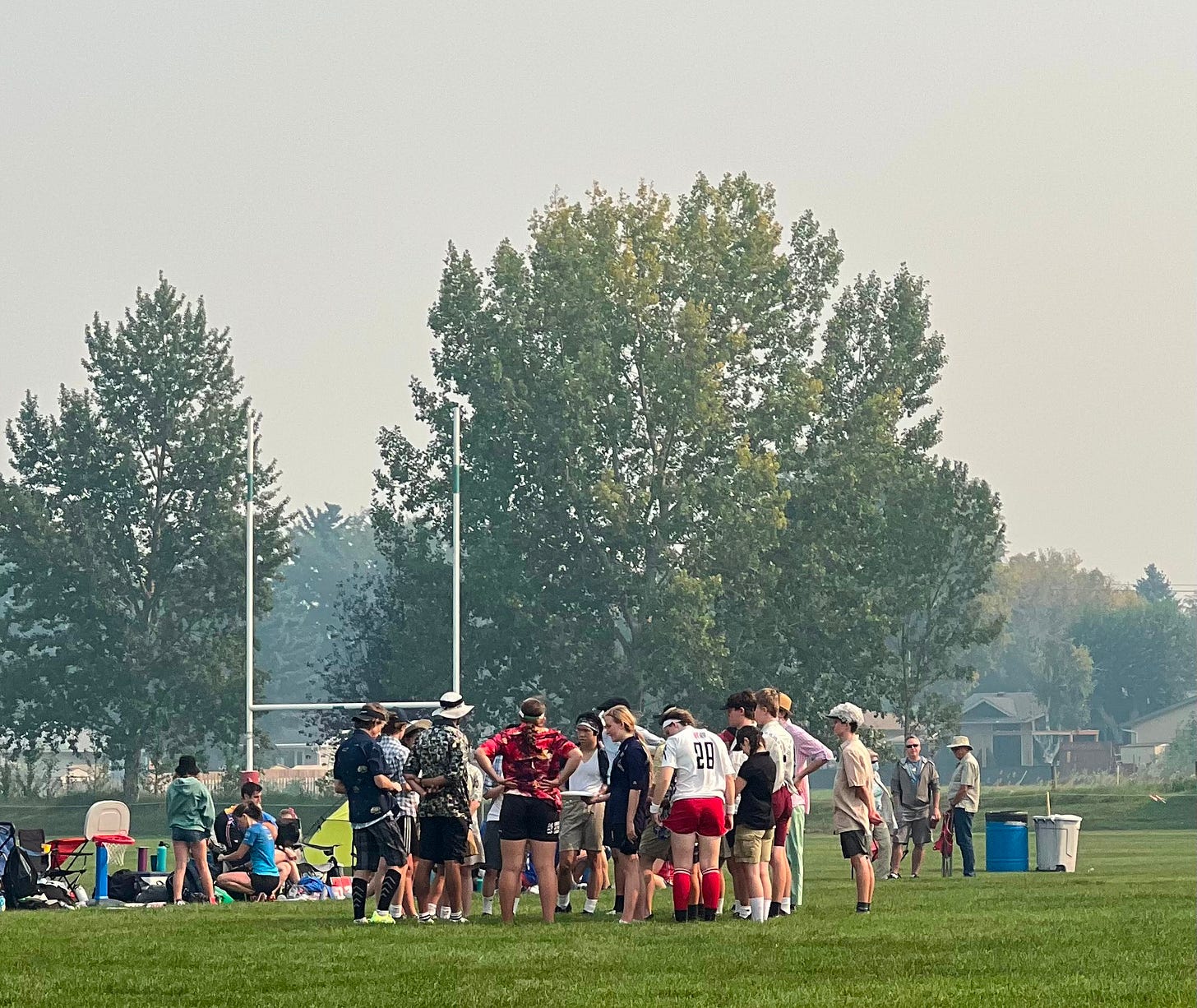It's Not Supposed To Be Like This
Wildfire smoke doesn’t just affect our lungs and hearts. It also affects our brain health.
Published Jun 12, 2025 in The Sherwood Park News • 2 minute read

Lately, my throat has a soreness and my eyes have been itchy. There is an acrid smell of smoke in every breath I take and most days there is a haze to the air from the wildfire smoke enveloping Sherwood Park.
We are grappling with increasingly prevalent wildfires linked to climate change and the poor air quality that comes from it.
I find myself checking the forecasted Air Quality Health Index (AQHI) for Sherwood Park more often than I check the weather because it is becoming a bigger factor in daily outdoor activities. It is also posing great risks to our health.
As wildfires become more frequent and intense due to climate change, so does our exposure to smoke — and the health risks that come with it. The tiny particulate matter in smoke doesn’t just affect our lungs and our hearts. Medical studies are now finding that wildfire smoke also affects brain health.
If you are having difficulty paying attention after exposure to wildfire smoke, it isn’t just in your head. Scientists believe that the reason wildfire smoke affects the brain is that the tiny particles within it can cross the barrier between the bloodstream and the brain, causing inflammation in the central nervous system. The tiny particles in smoke may also travel directly to the brain via the nose. Smoke is thereby affecting our ability to think, learn and remember.
Exposure to smoke is affecting us all, young and old. Research published in 2022 concluded that exposure to smoke during the school year is reducing student test scores. Research presented in 2023 showed that the odds of getting dementia went up twenty one percent due to over three years of increased exposure to wildfire smoke. By contrast, the same increase in exposure to fine particulate matter from other sources —like cars or factories—was linked to only a three percent increase in the odds of getting dementia.
Environment Canada defines smoke hours as the period of time where smoke in the air reduces visibility to 9.7 kilometres or less.
From 1981 to 2010, we averaged 14 smoke hours per year in the Edmonton region. In the past five years, that average has risen to 109 smoke hours. In 2023, there were 299 total smoke hours in Edmonton, the highest number ever recorded.
Growing up I never had an outdoor activity cancelled or postponed due to smoke. But I remember being at the Strathcona Druids Rugby Field during the September long weekend in 2023, watching my daughter participate in an Ultimate tournament. After the first matches on Saturday, the tournament director had to cancel the rest of the games due to smoke. The kids were devastated. Sadly, these cancellations are becoming common.
We cannot wave away the fact that climate change is increasing the frequency and severity of forest fires. Climate change is not a threat to future generations. It is affecting us right now.
Our children have had too many smoke-filled days already this year, and we have seen too many evacuees flee their homes in Alberta. We need to start tackling climate change with the urgency it requires.
Kyle Kasawski is the MLA for Sherwood Park. If you have questions about this column or any provincial issues, he would like to hear from you. Find his contact information at kylekasawski.ca



